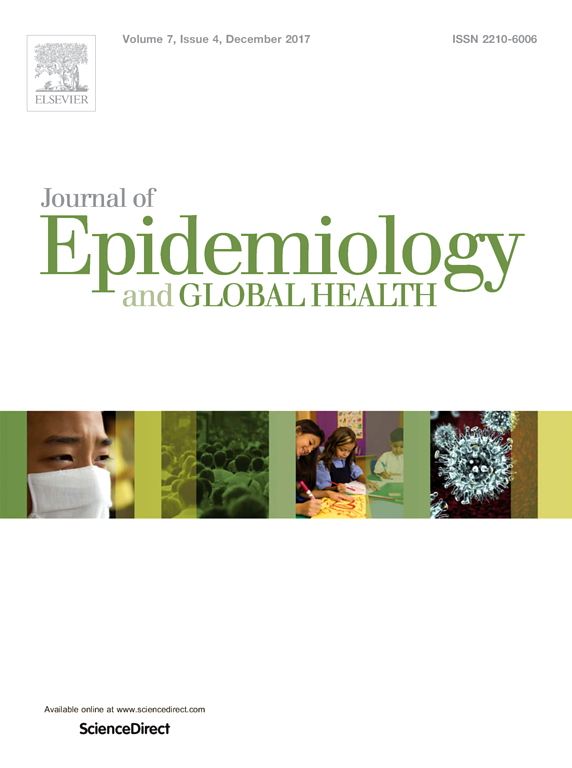高原肉毒杆菌中毒:了解高海拔效应。
IF 3.8
4区 医学
Q1 PUBLIC, ENVIRONMENTAL & OCCUPATIONAL HEALTH
引用次数: 0
摘要
肉毒杆菌中毒是由肉毒梭状芽孢杆菌(一种厌氧革兰阳性芽孢杆菌)引起的食源性神经麻痹疾病,可危及生命。由于漏诊,特别是在偏远地区,该病的发病率尚不清楚并被低估。它主要分为四种临床类型:婴儿肉毒中毒、成人食源性肉毒中毒、先天性肉毒中毒和伤口肉毒中毒。文章的总体目标是关注发病率的地域差异,包括高海拔地区的发病倾向,并阐明这种倾向背后的理论。本文章由计算机程序翻译,如有差异,请以英文原文为准。
Botulism in the Highlands: Understanding the High-Altitude Effect.
Botulism is a foodborne, life-threatening neuroparalytic disease caused by Clostridium botulinum, an anaerobic, gram-positive, spore-forming bacteria. Its incidence is unknown and underestimated due to missed diagnoses, especially in remote areas. It is divided into four main clinical types: Infant, adult-onset foodborne, iatrogenic, and wound botulism. The overall goal of the article is to focus on the geographic differences in incidence, including its propensity to high-altitude areas, and shed light on the theories behind this propensity.
求助全文
通过发布文献求助,成功后即可免费获取论文全文。
去求助
来源期刊

Journal of Epidemiology and Global Health
Medicine-Epidemiology
CiteScore
10.70
自引率
1.40%
发文量
57
审稿时长
19 weeks
期刊介绍:
The Journal of Epidemiology and Global Health is an esteemed international publication, offering a platform for peer-reviewed articles that drive advancements in global epidemiology and international health. Our mission is to shape global health policy by showcasing cutting-edge scholarship and innovative strategies.
 求助内容:
求助内容: 应助结果提醒方式:
应助结果提醒方式:


